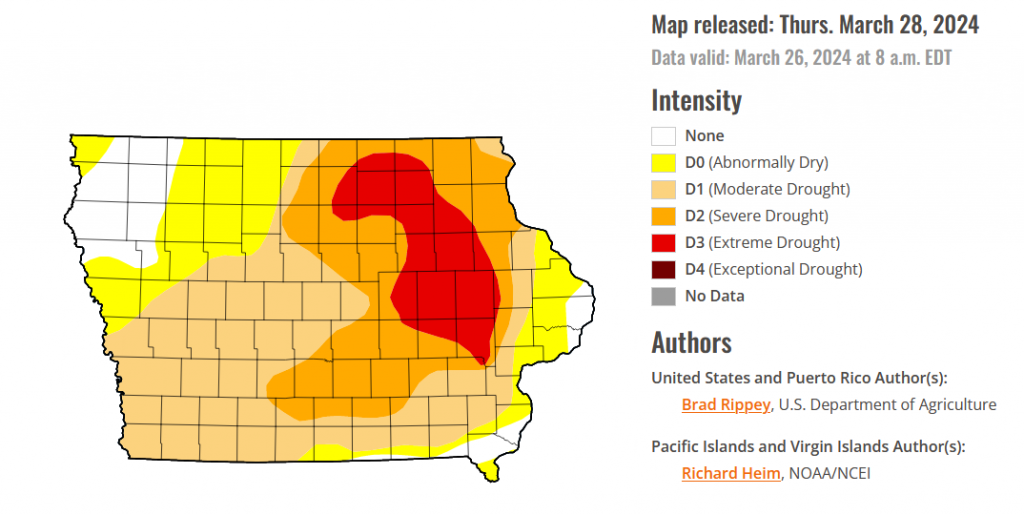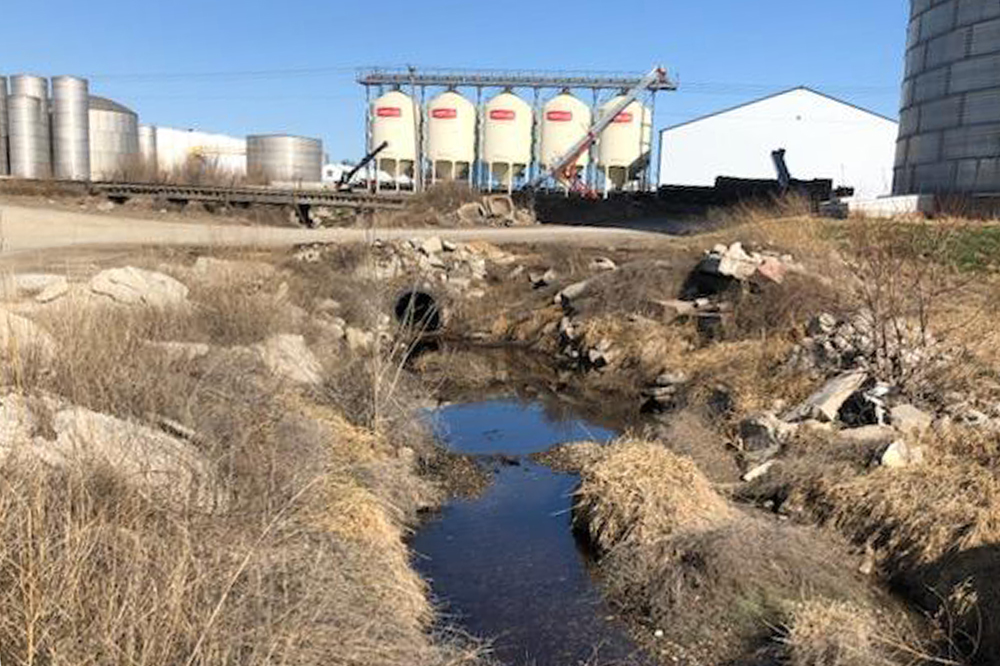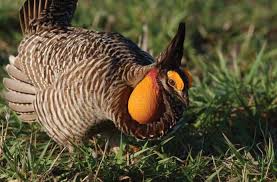CLICK HERE for the latest market quotes from the Iowa Agribusiness Network!
CLICK HERE for the latest market quotes from the Brownfield Ag News Network!
CLICK HERE for the latest market quotes from the Iowa Agribusiness Network!
CLICK HERE for the latest market quotes from the Brownfield Ag News Network!
(Radio Iowa) – The recent snow and rains have helped push back some of the drought conditions in the state. D-N-R Hydrologist, Tim Hall, the rainfall has been good to see. “The statewide average over the last seven days, three times the normal rainfall for that seven day period. And for the month of March, we’re ahead of normal. And so those things are all reflected in the U-S Drought Monitor this week,” Hall says. Northeast Iowa remains the driest area of the state, but the picture is better than last week.
“Almost 20 percent of the state was designated as D-3 extreme drought. And now that’s down to 12 percent,” he says. Hall says it is good to see the dry weather turnaround in March. “Every month that goes by between March and April in May and June, the monthly precipitation averages go up. So that’s why it’s really critical when we get above normal rainfall in March, because March is a pretty wet month, and even more so for April and even more so for May,” Halls says. He says the past few years a promising start to spring didn’t pan out. 
“We’ve seen really encouraging early spring and late winter rainfalls, but then the tap has been shut off. And we’ve missed out on April May and June rainfalls over the past few years,” he says. “So we’re really hoping that this will set a trend that will allow us to see above normal rainfall in April and then May and then June. And that’ll go a long ways toward getting some significant areas of drought wiped off the map here.”
The Drought Monitor shows the areas of the state not reporting any drought have gone from just more than two percent to now just under ten percent.
RED OAK – The fertilizer spill near Red Oak in Montgomery County earlier this month killed nearly all the fish in an almost 50-mile stretch of the East Nishnabotna River to the Missouri border.
On March 11, NEW Cooperative, Inc. in Red Oak notified the Iowa Department of Natural Resources (DNR) of a release occurring on-site. Approximately 1,500 tons (265,000 gallons) of liquid nitrogen fertilizer (32% solution) discharged into a drainage ditch, then into the East Nishnabotna River. The release occurred due to an aboveground storage tank valve left open for the weekend.
Upon learning of the release, DNR staff from the Environmental Field Office worked with the NEW Cooperative staff to stop the release and began cleanup efforts. DNR Fisheries staff began investigating the impacts to the Nishnabotna River.
DNR Fisheries staff documented the fish kill occurring in all 49.8 miles of the East Nishnabotna and Nishnabotna Rivers downstream of the spill. The kill continued in Missouri’s portion of the Nishnabotna River and ended near the confluence with the Missouri River.
DNR Fisheries staff used methods outlined in American Fisheries Society, Special Publication 35, and 571 Iowa Administrative Code Chapter 113 to evaluate the extent of the fish kill and estimate the number of dead fish. The rules and the use of the American Fisheries Society’s methodology are authorized by Iowa Code section 481A.151.
The fish kill count as of March 28th is below. Investigations of the release’s impact to other aquatic life are ongoing.
| Species | Number of Fish |
| Minnow Shiner Dace Chub | 707,871 |
| Suckers | 1,542 |
| Goldeye | 201 |
| Common Carp | 9,255 |
| Carpsucker | 14,500 |
| Buffalo | 4 |
| Sauger | 199 |
| Channel Catfish | 7,681 |
| Flathead Catfish | 264 |
| Green Sunfish | 935 |
| Silver Carp | 67 |
| Largemouth Bass | 69 |
| Grass Carp, diploid | 6,654 |
| Total | 749,242 |
Cleanup efforts at the NEW Cooperative facility are ongoing. Contaminated soils continue to be removed from the facility and from around a levee west of the facility. The contaminated soils will be land applied at approved locations, at agronomic rates consistent with Iowa law. Additionally, NEW Cooperative is pumping water from the east side of the levee. The pumped water will be stored in on-site holding tanks until land application can occur. A third-party consultant is collecting samples of the water-fertilizer mixture to determine accurate land application rates.
Per Iowa Code section 455B.186, a pollutant cannot be discharged into a river without a permit. DNR field staff are working with the DNR’s Legal Services Bureau to determine next steps with regards to enforcement action and restitution for lost aquatic life. The DNR will continue to monitor cleanup efforts.
Field test results indicate ammonia levels are declining in the river. The DNR continues to advise people to avoid recreating on the river and collecting and/or eating dead fish found on or near the river.
(Iowa New Service) – A farm group is helping Iowa agriculture producers find ways to reduce the amount of nitrogen they use on their crops. Excess nitrates can wind up in ground and surface water, and cause health problems. Practical Farmers of Iowa is encouraging farmers to find just the right amount of nitrogen they need for their crops – while avoiding applying too much, which the group says is common.
PFI’s Field Crops Viability Coordinator – Chelsea Ferrie – said thanks to federal grants and private funding, the group will pay farmers up to $35 for every acre that has a lower than normal yield if they didn’t apply enough nitrogen. “No cost to the farmer, either,” said Ferrie. “We’re trying to help incentivize them. This is something that farmers want to do – I mean, they want to be good stewards of the land – but also, that they need to have a profitable farm.”
The application period for the program is open through the end of April. To help them reach the right nitrogen balance, Ferrie said PFI will help farmers on the front end of the process, too – so they aren’t left guessing how much to apply. “Talk through what your typical fertilizer plan is, and what your reduction plan would be,” said Ferrie. “Then you would implement this year, going into the spring and into the season.”
Farmers have relied on nitrogen-based fertilizers for generations – but when applied in excess, nitrates run off into ground and surface water, posing health concerns for animals and people.
(Iowa Capital Dispatch) – A fertilizer spill this month in southwest Iowa killed nearly all the fish in a 60-mile stretch of river with an estimated death toll of more than 750,000, according to Iowa and Missouri conservation officers. That is the biggest fish kill in Iowa in at least a decade and the fifth-largest on record, according to state data. And it could have been worse: Fish populations were likely smaller than normal when the spill happened because of cold water temperatures and low river flows.
The spill originated at NEW Cooperative in Red Oak, where a valve that either malfunctioned or was not properly closed leaked about 265,000 gallons of liquid nitrogen fertilizer, most of which went into the nearby East Nishnabotna River. The leak happened on a weekend from March 9 to 11 in an area where the fertilizer is distributed to customers of the farmers’ co-op. That area is not required by state rules to have barriers that would prevent a leak from reaching the river. The result was a widespread annihilation of aquatic life.
A DNR investigation found dead or dying fish for 50 miles of river — beyond where the East and West Nishnabotnas meet — all the way to the Missouri border. There were also numerous dead frogs, snakes, mussels and earthworms. The DNR will return in late spring to note whether the fertilizer killed turtles that had buried themselves in the river bottom for winter. Their bloated carcasses will float to the river surface.
The carnage continued into Missouri, where the unified Nishnabotna River flows for about 10 miles before it meets the Missouri River. Matt Combes, a science unit supervisor for the Missouri Department of Conservation, said there was “a near total fish kill” in that state. The department surveyed one bank of the river for about two miles and counted nearly 4,000 dead fish. It will use that sample to estimate the total number of fish that were killed, which will likely be in the tens of thousands. The department is continuing to monitor the Missouri and Nishnabotna rivers for additional effects from the contamination. It’s possible NEW Cooperative will face sanctions in both states.

NEW Cooperative spill
The size of the fish kill in Iowa was estimated to be about 749,000, said Chris Larson, a fisheries supervisor for the DNR. Small fish such as minnows and chubs account for the vast majority of those fish, but among them were also about 7,700 channel catfish that anglers target.
Those who are responsible for fish kills typically pay restitution to the state based on the number and types of fish that die. Larson said a total restitution amount has not yet been solidified, but that the estimated value of the small fish is about $85,000. The value of the catfish would be about $115,000. Those two figures combined would be the largest valuation for a documented Iowa fish kill, according to DNR data.
Others that have caused recent fish kills have typically paid fish restitutions and a fines of up to $10,000 — the maximum the DNR can order administratively. The department has the option to seek higher penalties in district court.
DES MOINES – The Iowa Department of Natural Resources is investigating a wastewater discharge at the City of Anamosa in Jones County. On March 27, the DNR Manchester Field Office was notified by the City of Anamosa of a wastewater discharge due to equipment failure at the wastewater plant lift station. The discharge was discovered at approximately 8:15 a.m. It is estimated that up to 50,000 gallons of untreated sewage flowed into a storm drain leading to the Wapsipinicon River. City officials say the bypass has been corrected, and cleanup efforts have begun.
Any downstream recreational users should take caution and stay out of the river at this time. No dead fish have been observed at this time. The Iowa DNR will follow up with the city for further assessment.
To report a release after hours, please call the DNR’s emergency spill line at (515) 725-8694. Quick reporting can help DNR staff identify the cause of an incident. The DNR website has more information about spill reporting requirements.
WATERLOO, Iowa (KCRG) – Officials with John Deere have announced 308 production employees with Deere’s Waterloo Operations, will be placed on indefinite layoff, beginning April 29th. Employees learned of the layoffs Tuesday during meetings led by factory leadership.
In a statement, John Deere says each of their factories “balances the size of its production workforce with the needs of the individual factory to optimize the workforce at each facility.”
Currently, John Deere Waterloo Operations says they have about 5,500 employees, 3,600 of which work in production and maintenance jobs.
Kellerton, Iowa – The unique courtship of Iowa’s prairie chickens will be on full display at the Kellerton Grasslands Bird Conservation Area on April 6, during the annual Prairie Chicken Festival, in Ringgold County. The festival will be held at the Kellerton viewing platform, two miles west and one mile south of Kellerton. There is ample parking and the viewing platform is accessible for those with limited mobility.
Viewing will begin before dawn and last until the birds diminish their courtship dancing and booming, around 8 a.m.
Iowa began reintroducing prairie chickens in the 1980s, then released additional wild birds captured in western Nebraska from 2012-17, to supplement the population and add genetic diversity. To date, the population is holding steady, but at fairly low numbers, said Stephanie Shepherd, wildlife biologist with the Iowa Department of Natural Resources (DNR) Wildlife Diversity Program.
“Although stable, our population is around 65-70 birds at the Grand River Grasslands, which is low, and we’re not sure what their future is, so if you want to see them, now is the time,” she said.
During the festival the DNR will be onsite to help put spotting scopes on birds and to answer questions.
“The birds will be a good distance from the viewing platform so we are encouraging attendees to bring either a spotting scope or pair of binoculars,” she said. A limited number of scopes will be on hand for those who need them.
Can’t make it on April 6? The chickens will be displaying likely through the end of the month. Dusk is also a good time to view the birds because the sun is in the west, though the birds may be a little less active.
Kellerton is one of the premier grasslands in the state, for more than prairie chickens, but for other grassland birds as well. “It’s a really neat area for people to get a feel for what an expansive grassland looks like,” she said.
(Radio Iowa) – Keep Iowa Beautiful is looking for more volunteers to join the state’s effort in the national Great American Cleanup. Executive director, Andy Frantz says the idea is to clean up public spaces. “Whether it’s church groups, sports clubs, just volunteers or whatever to make a concerted effort to clean up parks, rivers, riverbeds, roadsides, all of those sorts of things. S every year there’s a big push,” he says. You can go to KeepIowaBeautiful.org to sign up. “The first 35 of those communities this year that sign up will be eligible for a 50-dollar reimbursement to any expenses, it’s pretty loose, any expenses that are related to the pickup efforts,” Frantz says. “It can be anything from bags to pickers to gloves.”
He asks that you sign up so they know how many groups are taking part. “They can do it between now and the end of July, we’d like to hope that they’ll be able to pull it together by then. So it’s really an open window that sits available to any of the communities and whatever works for them, you know weather permitting all of those sorts of things to have their local event,” he says. Frantz says the effort makes a difference. “There have been about 50 events in the last couple of years. Seven-thousand volunteer hours and over three-thousand trash bags of litter and debris have been picked up,” Frantz says. He says there are a lot more clean up efforts that happen each year outside this program. 
Frantz says applications are due April 30th for those who want to be considered for the reimbursement money. Awarded communities will receive notification on May 6th.
(Radio Iowa) – A bill headed to the governor would only let local governments have topsoil and storm water regulations that are tougher than state rules if the city covers the extra costs. Senator Mike Webster, a Republican from Bettendorf who works in the construction industry, says building regulations should be based on life, health and safety issues.
“I don’t build retention ponds. I build houses,” Webster says. “Some of the regulations that come from cities currently…put 24 inches of topsoil on ground that didn’t even have that. (It’s) thousands and thousands of dollars in added expense for somebody just trying to build a house.” Critics say the bill would prevent local officials from responding to flooding issues. Senator Janice Weiner, a Democrat from Iowa City, says the state legislature should stay out of it and let county and city officials make these decisions.
“I’m not worried about parking lots. In the end, I care about people’s homes and town homes. I care about the ability of people, of fellow Iowans to have dry basements.” The bill won Senate passage a year ago. Earlier this month the bill failed in the House, but four days later wound up passing 53 to 46. On Monday, Senate Republicans accepted an adjustment the House made in the bill and gave it final legislative approval.